- Your bag is empty
- Continue shopping
Bookstore
NDDC Scholarship Past Questions And Answers for Journalism
Original price was: ₦5,000.₦3,900Current price is: ₦3,900.
Up-to-date / Real NDDC Scholarship Journalism Test Past Questions and Answer will help you prepare faster and smarter for the NDDC Scholarship. Got shortlisted with few days or hours left to prepare? this pack will give you the insight you need to ace the tests and improve your chance of passing the test.
Looking for a Different Course? Check all NDDC Past Questions Here –>
NDDC Scholarship Past Questions And Answers for Journalism
Download the NDDC Scholarship Journalism Test Past Questions Practice Pack from this page in PDF format. The NDDC Scholarship test past questions pack makes your preparation easier and much better. Featuring questions from previous assessments as well as solutions to these questions.
About NDDC Nigeria
The Niger Delta Development Commission is a federal government agency established by Nigerian president Olusegun Obasanjo in the year 2000 with the sole mandate of developing the oil-rich Niger Delta region of Nigeria.
About The NDDC Scholarship
- The Niger Delta Development Commission (NDDC) Scholarship is a program initiated by the Nigerian government to provide educational opportunities for students from the Niger Delta region. The Niger Delta region is known for its significant oil and gas reserves, but it has also faced numerous socio-economic challenges. One of the ways the government aims to address these challenges is by offering scholarships to qualified students from the region to pursue higher education overseas.
- The amount for the foreign scholarship shall be based on the prevailing exchange rate of the Naira.Current Application Closing Date is 3rd November, 2023.
Application Procedure
- 1.The following documents must be attached to the application:
2.Recent passport photograph
3.Local Government Identification Letter
4.Post Graduate admission letter from a recognized overseas university
Relevant degrees from recognized universities
5.NYSC Discharge/Exemption Certificate
6.Upon successful completion of the application form, a registration number will be automatically assigned.
7.Applicants are advised to print a hard copy of the online-generated acknowledgment for future reference.
8.All shortlisted applicants will be announced and posted on the NDDC website: www.NDDC.gov.ng. These shortlisted candidates will subsequently be required to take part in a Computer-Based Test (CBT). Eligibility
To be eligible for the scholarship, a scholar must hail from the Niger Delta Region and have achieved a First Class Degree, Second Class Upper, or Lower Division.
The Selection Process
- 1. Initial Application: Interested candidates must submit an online application via the Commission’s Website.
2. Preliminary Shortlisting: Candidates will be shortlisted based on the following criteria:
WASSCE/NECO results
3. Undergraduate Degree classification (1st Class, Second Class Upper/Lower)
4. Local Government Identification
5. Computer-Based Test: Shortlisted candidates will undergo a computer-based test conducted by our consultants in Rivers State.
6. Minimum Test Score: Candidates must achieve a minimum score of 70% in the test to proceed to the next stage.
7. Further Shortlisting: Candidates who successfully pass the test will be further shortlisted.
8. Final Verification: The final verification of the candidates will be done through the Local Government Area (LGA) and Community Development Committee (CDC).
About the NDDC Scholarship test format
NDDC overseas scholarship test was conducted by Cinfores-Ltd, between 2010 and 2015. Since 2016, the tests are now conducted by MEIL (MARG Educational International Limited).
The test usually comprises of 2 sections –
1. General questions which everyone will have to sit, and
2. Discipline-based questions.
For example, candidates in Engineering and Science related disciplines could take a mix of science-based questions like maths, English, physics and chemistry for part 1, then discipline-specific questions for part 2. The test usually last between 30 to 60 minutes.
Sample Past Questions And Answers for NDDC Scholarship – Journalism
- Question: Who is often referred to as the “Father of Journalism”?
A Edward R. Murrow
B Walter Cronkite
C Benjamin Franklin
D Bob Woodward
Answer: C Benjamin Franklin - Question: What is the primary role of an editorial in a newspaper?
A Reporting breaking news
B Providing analysis and opinion
C Advertising products
D Editing photographs
Answer: B Providing analysis and opinionQuestion: What does the acronym “AP” stand for in the context of journalism?
A All Press
B Associated Publishers
C Associated Press
D American Press
Answer: C Associated PressQuestion: What is the term for a news story that is still developing and being updated as new information becomes available?
A Feature story
B Editorial
C Breaking news
D Obituary
Answer: C Breaking newsQuestion: Who is responsible for fact-checking and verifying information in a newsroom?
A Editor-in-chief
B Copy editor
C Reporter
D Photographer
Answer: B Copy editorQuestion: Which type of journalism focuses on in-depth, investigative reporting often involving corruption or wrongdoing?
A Feature journalism
B Tabloid journalism
C Sensationalism
D Investigative journalism
Answer: D Investigative journalismQuestion: What does the term “byline” in a news article represent?
A The publication date
B The headline of the article
C The name of the author
D The word count of the article
Answer: C The name of the authorQuestion: Which of the following is NOT a common beat for a journalist?
A Politics
B Sports
C Entertainment
D Astrophysics
Answer: D AstrophysicsQuestion: What does the term “freelance journalist” refer to?
A A journalist who works for a single news organization
B A journalist who covers only local news
C A journalist who writes for multiple publications on a freelance basis
D A journalist who specializes in feature stories
Answer: C A journalist who writes for multiple publications on a freelance basisQuestion: In journalism, what does the acronym “AP Style” stand for?
A Authoritative Publication Style
B Associated Press Style
C Article Placement Style
D Advanced Print Style
Answer: B Associated Press StyleQuestion: What is the term for a news story that is deliberately exaggerated or sensationalized to attract readers?
A Editorial
B Feature story
C Clickbait
D Press release
Answer: C ClickbaitQuestion: Which of the following is NOT a common source for news stories?
A Government officials
B Eyewitnesses
C Fictional characters
D Experts in a field
Answer: C Fictional charactersQuestion: What is the “inverted pyramid” style of writing in journalism?
A A style that places the most important information at the beginning of a news story
B A style that uses long, complex sentences
C A style that focuses on the emotional aspects of a story
D A style that only includes direct quotations from sources
Answer: A A style that places the most important information at the beginning of a news storyQuestion: Who is responsible for taking photographs to accompany news stories?
A Editor-in-chief
B Photojournalist
C Reporter
D Graphic designer
Answer: B PhotojournalistQuestion: What is the primary purpose of an op-ed (opinion-editorial) article in a newspaper?
A Reporting facts
B Providing an analysis of current events
C Promoting products
D Announcing upcoming events
Answer: B Providing an analysis of current eventsQuestion: Which term describes a journalist’s ethical obligation to protect the identity of confidential sources?
A Shield law
B Whistleblower protection
C Press freedom
D Right to reply
Answer: A Shield lawQuestion: What does the term “media bias” refer to in journalism?
A The practice of quoting multiple sources in a news story
B A preference for one political or social perspective over others in reporting
C The use of sensational headlines
D The practice of providing equal airtime to all perspectives
Answer: B A preference for one political or social perspective over others in reportingQuestion: What is the primary purpose of a press release?
A To provide an analysis of current events
B To report breaking news
C To promote a product, event, or organization
D To provide an in-depth investigation
Answer: C To promote a product, event, or organizationQuestion: What is the term for a headline that stretches across the entire width of a newspaper page?
A Banner headline
B Subheadline
C Byline
D Dateline
Answer: A Banner headlineQuestion: Which term describes the practice of providing equal time or space to all sides of a controversial issue in journalism?
A Objectivity
B Sensationalism
C Bias
D Editorializing
Answer: A Objectivity
| Select Option | Get eBook, Get eBook+Online Practice, Get Online Practice |
|---|
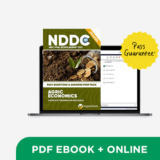
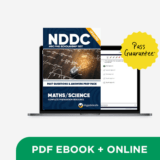


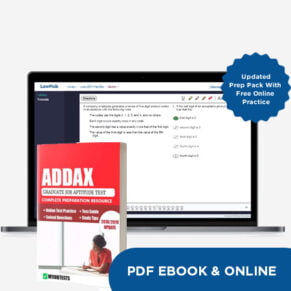
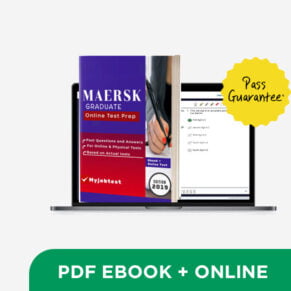
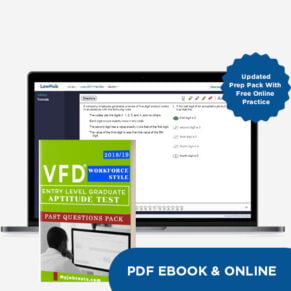


Customer reviews
Reviews
There are no reviews yet.
Write a customer review